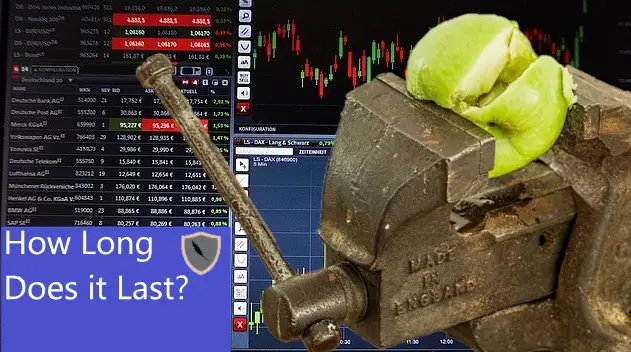Emerging markets have for the past 10 years been the frontier of high return investment methodologies. Funds who knew what they were doing could see returns in the range of 30% per year. However there is a degree of risk for those who don’t know what they are doing.
This article is going to give you everything you need to know about investing in emerging markets. I outline the theory, methodology, risks, and expected returns. The goal here is to give you the proper information so that you’re squared away to make sound investment decisions yourself.
Here at Chronohistoria I teach people how to generate above average market returns (alpha). I routinely publish articles that go over investing research, methodologies, and tips/tricks of the trade so that you are better prepared to earn in today’s crazy economy. Feel free to sign up for the free newsletter to remain up to date on everything.
Let’s jump right into Investing In Emerging Markets: Is It Good For Your Portfolio?
What Is An Emerging Market?
For those who are unaware, economies within our global economy have three tiers. (source)
- Developed Countries (U.S.A, Japan, Germany, U.K)
- Emerged Markets (Israel, South Korea, Czech Republic)
- Emerging Markets (China, India, Mexico, Nigeria, Russia, Iran)
Each of these tiers reflect the current economic situation within the respective country. Developed countries have strong stable economies, an established political system, and permeable social class structure. Within developed countries we see a handful of companies dominating the market through talent acquisition. (U.S Tech)
Emerged markets are characterized by a fledgling middle class, rise in tourism, and an economy that is starting to stabilize. Often within emerged market countries carry a high degree of corruption within their political system. This in turn leads to lower levels of innovation in the emerged market. (source)
Emerging markets however are characterized by massive levels of business innovation, high resource extraction, a shift from authoritarianism to free market capitalism, and the start of a middle class. (source)
It is important to remember that these emerging markets are good investments for three reasons.
- The transition to a free market capital economy
- Massive levels of business innovation
- Huge growth in wages and living conditions for a fledgling middle class
Theory Behind Investing In Emerging Markets: Why It Works
Every single investment methodology has to have a theory that supports it. Emergent market investing is no different.
The theory of emerging markets is this. Emerging markets are distinguished by a large growth in manufacturing and resource consumption. With a growth in manufacturing so comes a growth in wages for the factory workers. Further, those who hold property that extracts natural resources (mines, forests, etc.) start to see an increase in their value. (economic history article that goes over wage increases)
Both of these increases (factor labor wage and natural resource cost) results in a rise in average wage across the emerging market. With this rising wage comes a rising standard of living. From this we can see the development of a middle class within the emerging market. (source)
This middle class in turn starts to buy goods and products to distinguish their status. This emulation takes the form of the upper class in their society. This is the start of a consuming society. (source)
Further, this developed middle class starts to build their own businesses. This leads to large scale innovation. This innovation overtime leads to more resource extraction and increased wages. Thus the cycle repeats until the emerging market becomes the emerging and innovation begins to slow due to the “middle income trap.” (source)
Since we have a growth in wealth we can invest and make money. Now that we understand the theory behind why it works let’s look at how we can create an investing methodology to generate capital from emerging markets.
How To Invest In Emerging Markets And Make Money: The Methodology
So now that we understand how the theory behind investing in emerging markets works. Now its time to discuss how we can position an investment to make money off it. Or the investment methodology.
The trick here is to find an economy that is in a period of emerging market. To do this we first need to identify the country. Fortunately for us this type of information is publicly available. The next step is to find out what goods or services people will buy as they start to gain extra income.
Typically the first thing we see people buy is healthcare and education. Healthcare in this case is what we will go after as it’s the easiest. Investing in education is hard due to the intangible nature of it. (source)
Ok, so we are looking for a developing economy with an emerging healthcare market. This will position an investment to profit off both a growing population and a population with extra income. This extra income will transition to increased spending on healthcare needs.
For the purposes of this article I am going to use India as the developing country.
There are two ways we can go about doing this.
First Way: Investing In Individual Companies
There are a couple ADR (American Deposit Receipts) that are in the Indian healthcare sector. One of the largest is the pharmaceutical company Dr. Reddy’s Laboratories (RDY).
As we can see from the above image RDY has seen massive swings in price following the Covid 2020 pandemic. RDY seeks to bring affordable pharmaceuticals to the emerging middle class in India.
In this case you could place an investment to follow the emerging market hypothesis that people will spend more on healthcare. Logic would dictate that as a result pharmaceutical companies would also see a rise in total revenue over time.
Naturally however investing in individual companies is very risky. You can do this but you need to understand how to hedge properly. Hedging is when you take out an investment that inverses your first. That way if one investment fails the other will grow. It keeps you in the market.
I wrote up an entire article on hedging and the easy way to do it. (You can read it by clicking here if interested)
However for the average retail investor I recommend buying a foreign ETF instead of just throwing your money at select companies. This way your risk is significantly lower.
Second Way: Investing In Foreign Emerging Market ETFs
In the above chart we have WisdomTree’s India ETF (EPI). This ETF seeks to mimic the most profitable companies in India’s economy. Overall this means that your investment is going to be spread out across the entire Indian economy. (Here is the website for WisdomTree’s ETF)
This is different as you won’t be 100% invested into the target sector. This is ok however as EPI has 100% allocation in companies that are geographically located in India. You are going to be exposed to the Indian financial, energy, materials, tech, and healthcare sectors. All of these will grow in an emerging market.
I wrote up an entire article on EPI and its use within a portfolio. Since we wrote the article (6 months ago) EPI has gone up 14%. (Check it out here if interested)
Risks In Investing In Emerging Markets
Every single investment in the world comes with a degree of risk. Investing in emerging markets is no different.
The risk for emerging market investing is political destabilization or the target economy moving too fast and entering a middle income trap. The trick is to learn how to prepare against each of these risks within your portfolio. Let me show you how.
Protecting Against Political Destabilization In the Emerging Market Position
This is going to depend upon your skill level. There are two ways that professionals protect against political destabilization in emerging markets. They either remain up to date on all political events within the host country or they hedge their position with another emerging market.
First, you can write a computer algorithm that will skim websites to automatically alert you of impending political events. This is called investor sentiment analysis but instead of using investors you are looking at political actors.
If you’re interested in learning how to use Python to construct these sentiment analysis models I highly suggest you check out this article written by James Briggs at Towardsdatascience.com. (Source)
It will take some time to train a model to do exactly what you want. However with some time and patience your or you’re fund can be protected.
The second way is to hedge the position using another competing emerging market. For the above scenario we used India, a competitor emerging market then would be China. In this case you would simply target a sector within China that would explode should your investment in India fail.
In the above scenario the blue line is India while the red is China. As the value of your India position declined your hedge position in the competing emerging market (China) would increase in value.
This means you make money no matter what happens. Pretty cool right!
Protecting Against The Middle Income Trap In Emerging Markets
In the last two decades the world has seen emerging markets stop in their economic progression due to the pressures of globalism. These pressures of globalism force a market or economy to rely too much upon manufacturing and exporting to developed economies.
The middle income trap is when an economy exists in the middle ground between emerging markets and developed countries. A country in the middle income trap can’t compete with manufacturing because too much of their population is in the middle class. (source)
On the other hand, a country with a middle income trap can not retain the necessary talent to build large wealth and become developed. This is because the talent that could build the businesses immigrated to developed countries where there is more benefits.
As such, a lot of economies fall into the middle income trap. If our emerging market moves too fast they will fall into the middle income trap. When this happens our growth in the investment becomes almost 0. At this point we should liquidate the investment because there is no alpha left.
So how do you prevent this within your portfolio? The trick is to remain up to date on the government of the emerging market. If the government is rapidly diversifying exports while encouraging a free capital market then that’s a good sign. However if the government starts to slow down on diversifying or starts issuing monopolies it’s time to lower the size of the emerging market position. (Article that goes over how Asia avoids the middle income trap)
Expected Returns Of Investing In Emerging Markets
This is the part everyone wants to know. As usual past returns are not indicative of future returns. Especially when you’re utilizing a global-macro investing approach.
The trick for predicting future returns is to hold for a long term position. You will have to wait for the emerged market to start moving in your favor. Evidence has indicated that if you’re using a macro-investing methodology such as emerging market investing then you can expect large long term returns. (source)
It all comes down to the emerging market that you are investing in and how long you plan on holding. Further, you need to select a sector or sectors that will benefit from the emerging market theory. If you perform all of this research properly then you can expect compounding returns (CAGR) in the rate of 16-20%. (source on Indian healthcare sector)
However if you can do the proper research then you will blow that number out of the water. Some funds in the U.S that focus on global-macro approach have seen massive returns in the range of 50-60% while also hedging risk. Some of the U.S Ivy endowment funds for example have seen large hedged returns. (source)
Simply put, when done properly you can expect 14-20%. Good macro investors can up that number into the 30’s range though venture funds and private equity but that’s a discussion for another day.
Conclusion
There you have it. Everything you need to know to start investing in emerging markets efficiently. Professional investors on the street employ these types of methodologies all the time to see huge returns, it’s only fair you guys get the same info.
Here at Chronohistoria I teach people how to generate above normal returns in the market (alpha). I routinely publish articles on investment methodologies, research, and tips/tricks so that you are better armed to increase that yearly ROI. Feel free to sign up for the free newsletter if you want to remain up to date.
Further, you can check out some of the other articles below.
-
How Long Does a Short Squeeze Last? (3 Answers)

What is the time frame for you short squeeze? Well here is everything you will ever need to know to determine how long it will last.
-
Why You Still Own a Stock After It’s Delisted and How to Sell It

Do you still own a stock after its delisted? How do you sell it? Don’t worry the stock is still worth money and here is how to sell.
-
Can You Make 1% A Day in the Stock Market? (3 Steps)

Making 1% a day in the stock market is hard but defiantly doable. Here are 3 simple steps to helping you achieve this return.
Until next time, I wish you the best of luck on your investing journey.
Sincerely,



